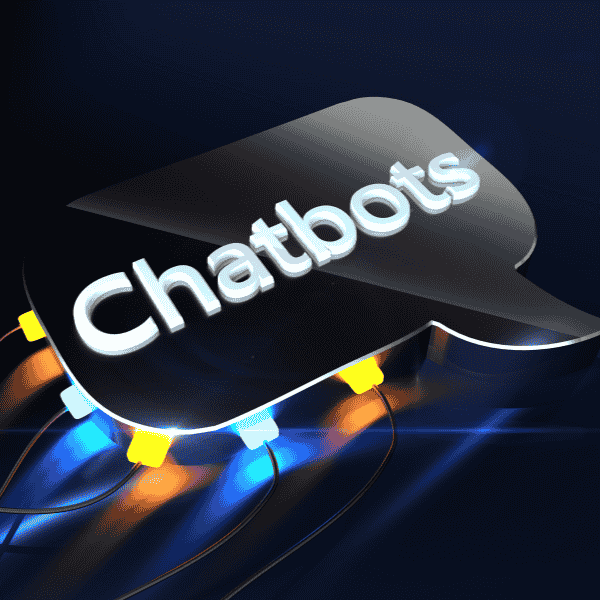Introduction
Chatbots are a technological marvel created at the nexus of artificial intelligence and human interaction. These digital beings, which can have natural language conversations with people, have grown in importance across many industries. Machine learning is a key factor that underlies these chatbots’ skills. In this thorough investigation, we delve into the intricate machine-learning methods that give chatbots the ability to comprehend, react, and change. We’ll set out on a voyage across the chatbot and machine learning worlds, starting with an overview of the chatbot landscape and ending with the ethical issues that surround their creation.
What Are Chatbots?
Fundamentally, chatbots are computer programs created to mimic human speech. They operate as digital middlemen, facilitating communication between users and computing apparatus. Chatbots are now useful tools that can perform a variety of tasks, including answering questions, offering assistance, and having casual discussions.
The Evolution of Chatbots
Chatbots, those virtual friends that can communicate with humans, have seen a remarkable evolution. They evolved from simplistic text-based systems into powerful AI conversationalists. Beginning in the 1960s with early chatbots like Eliza, this transformational journey continued in the early 2000s with rule-based systems.
The crucial leap from rule-based replies to AI-driven interpretation of natural language inquiries happened with AI-powered chatbots, illustrated by Siri in 2011. But recently, models like GPT-3, which can hold meaningful and contextually relevant conversations, have brought about the ultimate revolution in chatbots.
These contemporary chatbots, whose topologies are transformer-based, have a profound comprehension of linguistic patterns. For several businesses, specialized chatbots have emerged to improve interactions in that particular industry. Additionally, conversational AI and virtual assistants like Alexa and Siri, which incorporate speech synthesis and recognition, have become indispensable in our daily lives.
The ability for chatbots to comprehend text, audio, visuals, and gestures is the newest frontier in chatbot development. However, ethical considerations have emerged, including as partiality and privacy concerns.
The Versatility of Chatbots
There is no one use case for chatbots. They are used in many different industries, including customer service, e-commerce, healthcare, and banking. Their importance in the current computing scene can be better understood by taking into account their versatility.
Digital conversational marvels known as chatbots are not limited to a single job or sector. They are essential instruments in a variety of fields thanks to their versatility and extensive applicability. Let’s look at how chatbots do well in various industries.
Customer Service Heroes
In customer service, chatbots provide round-the-clock support, resolving inquiries, and enhancing satisfaction.
E-commerce Facilitators
In e-commerce, chatbots guide shoppers, recommend products, and streamline the shopping experience.
Healthcare Allies
Chatbots assist patients by providing medical information, scheduling appointments, and even monitoring conditions.
Financial Advisors
In finance, chatbots help with financial management, transactions, and fraud detection.
Educational Guides
In education, chatbots assist with course selection, answer academic queries, and facilitate language learning.
HR and Recruitment Partners
For HR, chatbots streamline hiring, schedule interviews, and help with employee inquiries.
Travel Companions
In travel, chatbots book flights, and hotels, and pro<h2vide real-time updates on travel plans.
Personal Productivity Aids
Chatbots help manage tasks, set reminders, and track expenses, enhancing daily efficiency.
Entertainment Curators
They recommend content and engage users in interactive storytelling experiences.
Accessibility Advocates
Chatbots provide accessibility features, making digital content inclusive.
Government Services
In the public sector, chatbots assist with public services and emergencies.
Gaming Partners
They enhance gaming experiences by providing in-game assistance and facilitating multiplayer interactions.
Legal Assistants
Chatbots simplify legal processes, making legal information accessible.
Real Estate Advisors
In real estate, chatbots assist with property searches and inquiries.
Nonprofit Supporters
Chatbots engage supporters, facilitate donations, and promote social causes.
Types of Chatbots
Rule-Based Chatbots
Rule-based chatbots adhere to decision trees and predefined rules. They work well for straightforward jobs and pre-written exchanges. We’ll examine both their capabilities and drawbacks.
AI-Powered Chatbots
Artificial intelligence-powered chatbots take advantage of machine learning and natural language processing to comprehend user inputs and react to it more flexibly. This data is used by the chatbots to adapt and learn, resulting in a more engaging discussion.
Hybrid Chatbots
The benefits of rule-based and AI-powered chatbots are combined in hybrid chatbots. They are appropriate for a variety of applications because they provide a balance between organized interactions and adaptive learning.
The Core of Chatbot Intelligence: Machine Learning
The Intersection of Machine Learning and Chatbots
Machine learning, a branch of artificial intelligence, has worked closely with chatbots, those digital conversationalists, to develop their intelligence. Chatbots are able to understand, react, and learn because of this synergy. Let’s study the essence of this intersection and how it affects the development of chatbot technology.
The Synergy
Chatbots and machine learning work best together. Chatbots give machine learning algorithms the real-world examples and data they need, whereas machine learning algorithms are made possible by machine learning.
Supervised Learning
The creation of chatbots requires supervised learning at its core. It entails teaching chatbots to spot trends between user requests and responses using labeled data. Because of this, chatbots can respond appropriately to inquiries that aren’t familiar.
Unsupervised Learning
Chatbots can categorize and comprehend unstructured input with the aid of unsupervised learning techniques like clustering and topic modeling, which improves the accuracy of their responses.
Reinforcement Learning
Rewards and penalties are introduced to chatbot behavior through reinforcement learning. As time goes on, chatbots improve their conversational skills by refining their responses in response to user input.
Natural Language Processing (NLP)
NLP is essential for chatbot language understanding. It makes it possible for chatbots to process human language, comprehend context, and give appropriate responses.
Challenges and Solutions
Defining ambiguity and context can be difficult for chatbots. These problems are being addressed by sophisticated algorithms and context-tracking systems, expanding chatbot capabilities.
The Future of Conversational AI
Chatbots will become much more capable in the future, with increasing roles in customer service, education, and the healthcare industry. User interactions will be improved through multimodal capabilities, including speech and image recognition.
In summary, machine learning and chatbots share a dynamic partnership where AI meets conversation. This collaboration empowers chatbots to engage, understand, and continually improve. As technology evolves, chatbots will bridge the gap between humans and machines with remarkable intelligence and efficiency.
Supervised Learning for Chatbots
The cornerstone of chatbot development is supervised learning, which lays the groundwork for conversational AI to comprehend and reply appropriately. In this method, user inputs are paired with intended responses to train chatbots using labeled data. Chatbots can recognize trends, extrapolate from training data, and respond to varied user queries with contextually appropriate information thanks to this assisted learning process.
Accurate curation and annotation of training data require human skills. This thorough curation makes sure that chatbot responses match user expectations and that they are continually enhanced by user feedback.
Chatbots can adapt, scale, and manage a variety of user interactions thanks to supervised learning. To deliver a diverse and moral user experience, problems like resolving ambiguity and addressing ethical issues in training data must be solved.
In conclusion, supervised learning is the foundation of chatbot intelligence and enables them to develop into significant assets for a variety of sectors and user interactions.
Unsupervised Learning for Chatbots
A key component of chatbot creation is unsupervised learning, which enables these digital conversationalists to understand the nuances of human language. It enables chatbots to investigate unstructured data, spot trends, and modify their behavior to fit different conversational circumstances.
Clustering and Adaptability
A key component of chatbot creation is unsupervised learning, which enables these digital conversationalists to understand the nuances of human language. It enables chatbots to investigate unstructured data, spot trends, and modify their behavior to fit different conversational circumstances.
Handling Ambiguity
Unsupervised learning-trained chatbots can handle ambiguity in user input by inferring context from hazy requests. For responses that are user-centric, this ability is crucial.
Data Quality and Continual Learning
Unsupervised learning requires high-quality and diverse training data. Chatbots continuously improve their language comprehension and user preference adaptation because of rich datasets.
Reinforcement Learning in Chatbots
A dynamic component of chatbot creation that directs their adaptability and continual progress is reinforcement learning. Reinforcement learning-capable chatbots communicate with users while receiving feedback in the form of incentives and penalties. Their behavior is improved through this iterative process, which helps them become skilled conversationalists.
Adaptive Skills
Chatbots may adjust and improve their responses based on user input thanks to reinforcement learning, guaranteeing that they develop into useful conversation partners.
Handling User Changes
This method of training chatbots allows them to adapt to changing user preferences and dialogue dynamics while still remaining relevant and interesting.
Challenges and Ethics
A challenge in reinforcement learning is striking a balance between exploitation and exploration. The reward mechanisms must adhere to ethical standards in order to prevent reinforcing negative behaviors.
The Future
Reinforcement learning-trained chatbots will become ever more adaptable as technology advances, playing a crucial role in industries including customer service, healthcare, and education.
Natural Language Processing (NLP) in Chatbots
The Vital Role of NLP
The foundation of chatbot intelligence is Natural Language Processing (NLP), which enables bots to efficiently comprehend, process, and produce human language.
Language Understanding
NLP enables chatbots to dissect sentences, identify grammatical patterns, and determine the meaning of text, all of which are necessary for an accurate interpretation of user requests.
Tokenization and Syntax Parsing
Chatbots can extract significant parts from phrases using methods like tokenization and syntax parsing, which helps users gain a deeper knowledge of language structure.
Named Entity Recognition (NER)
With the help of NER, which classifies items in the text, chatbots are better able to respond in a way that is appropriate to the context, especially when given structured data.
Sentiment Analysis
Sentiment analysis identifies emotional undertones in text, assisting chatbots in comprehending user sentiment—a crucial ability for providing excellent customer care and empathetic responses.
Conversational Context
By referring to prior messages, NLP enables chatbots to recall and exploit conversational context to deliver coherent and contextually relevant responses.
Handling Ambiguity
NLP gives chatbots the tools they need to deal with ambiguous language by resolving user inquiries and customizing responses to their context and intent.
Multilingual Capabilities
Language boundaries can be overcome and chatbots using NLP may speak in a variety of languages, expanding their worldwide reach.
Key NLP Techniques for Chatbots
Chatbots can comprehend and communicate with users in human language thanks to natural language processing (NLP). In this area, a number of essential strategies are crucial in forming chatbot intelligence. In this investigation, we expose three crucial NLP methods that enable chatbots to comprehend the subtleties of human conversation.
Tokenization
Text is divided into smaller components, such as words or phrases, through the process of tokenization. Tokenization helps chatbots analyze and comprehend phrase structure by dissecting user input into manageable parts.
Part-of-Speech Tagging
Each word in a phrase is given a grammatical category (such as a noun, a verb, or an adjective) by part-of-speech tagging. This method is used by chatbots to determine each word’s function, assisting with syntax analysis and meaning extraction.
Named Entity Recognition (NER)
Entities such as names of individuals, places, dates, or organizations are recognized and categorized by NER. Chatbots use NER to glean important data from user inquiries and deliver answers that are appropriate for the given context.
Sentiment Analysis
Chatbots are able to ascertain the emotional tone of user messages through sentiment analysis, also known as opinion mining. It makes it easier for chatbots to determine whether a comment is favorable, negative, or neutral, which improves their capacity for empathic response.
Lemmatization and Stemming
There are two methods for getting words down to their root or base forms: lemmatization and stemming. These techniques are used by chatbots to normalize text, ensuring that different spellings of the same word are handled the same way.
Named Entity Disambiguation
Named entity disambiguation assists chatbots in choosing the appropriate interpretation based on context when an entity name has numerous potential meanings (for example, “Apple” as a firm or a fruit).
Coreference Resolution
The process of coreference resolution detects and connects pronouns (such as “he,” “she,” and “it”) to the appropriate nouns in a phrase. By preventing ambiguity regarding what pronouns relate to, this strategy aids chatbots in maintaining continuity and clarity in dialogues.
Text Classification
Text categorization entails grouping text according to predetermined labels or classes. This method is used by chatbots for tasks like intent recognition, in which they ascertain the objective or purpose of a user’s message.
Language Modeling
Language models are trained algorithms that gauge the likelihood of the following word in a sentence by looking at the ones that came before. To provide responses that are logical and appropriate for the situation, chatbots use language models.
Named Entity Linking (NEL)
Chatbots can acquire more details and context about named entities by using NEL, which links named entities in the text to external knowledge bases or databases.
The foundation of chatbot language understanding and processing is formed by these fundamental NLP techniques. By using these techniques, chatbots may comprehend user inquiries, respond in a way that is contextually appropriate, and participate in deep discourse, bridging the gap between natural language processing and artificial intelligence. Chatbots will become even more adept at comprehending and addressing user demands as NLP advances.
FAQs
What is machine learning, and how does it relate to chatbots?
A subset of artificial intelligence called machine learning gives chatbots the ability to learn from data and get better over time. It is the science behind chatbot intelligence.
What are the main types of machine learning used in chatbots?
To properly interpret and respond to user input, chatbots integrate supervised learning, unsupervised learning, reinforcement learning, and Natural Language Processing (NLP).
How does supervised learning work in chatbots?
Chatbots are trained with labelled data through supervised learning, where they are taught to recognise patterns and give pertinent answers based on pre-defined examples.
What role does unsupervised learning play in chatbot development?
Chatbots benefit from unsupervised learning by understanding unstructured data and classifying information, which enhances their capacity to decipher user requests and offer insightful responses.
How does reinforcement learning benefit chatbots?
Chatbots can develop through a feedback loop using reinforcement learning, where they are rewarded for providing accurate information and penalised for providing inaccurate information.
Why is Natural Language Processing (NLP) essential for chatbots?
NLP is essential for chatbots because it allows them to comprehend and produce human language, enabling rich interactions and discussions.
What are some key NLP techniques used in chatbots?
Tokenization, sentiment analysis, named entity recognition (NER), and text categorization are NLP approaches that help chatbots better grasp and process language.
How do chatbots handle ambiguity in user queries?
Chatbots employ natural language processing (NLP) and machine learning to decipher confusing questions and infer context, offering contextually relevant answers.
What are the ethical considerations in chatbot development with machine learning?
Avoiding bias, guaranteeing fairness in responses, and preserving user privacy and data security are just a few examples of ethical considerations.
What’s the future of chatbots and machine learning?
The way we interact with technology and services will change in the future thanks to increasingly sophisticated chatbots, personalised user experiences, and deeper integration into many businesses.






